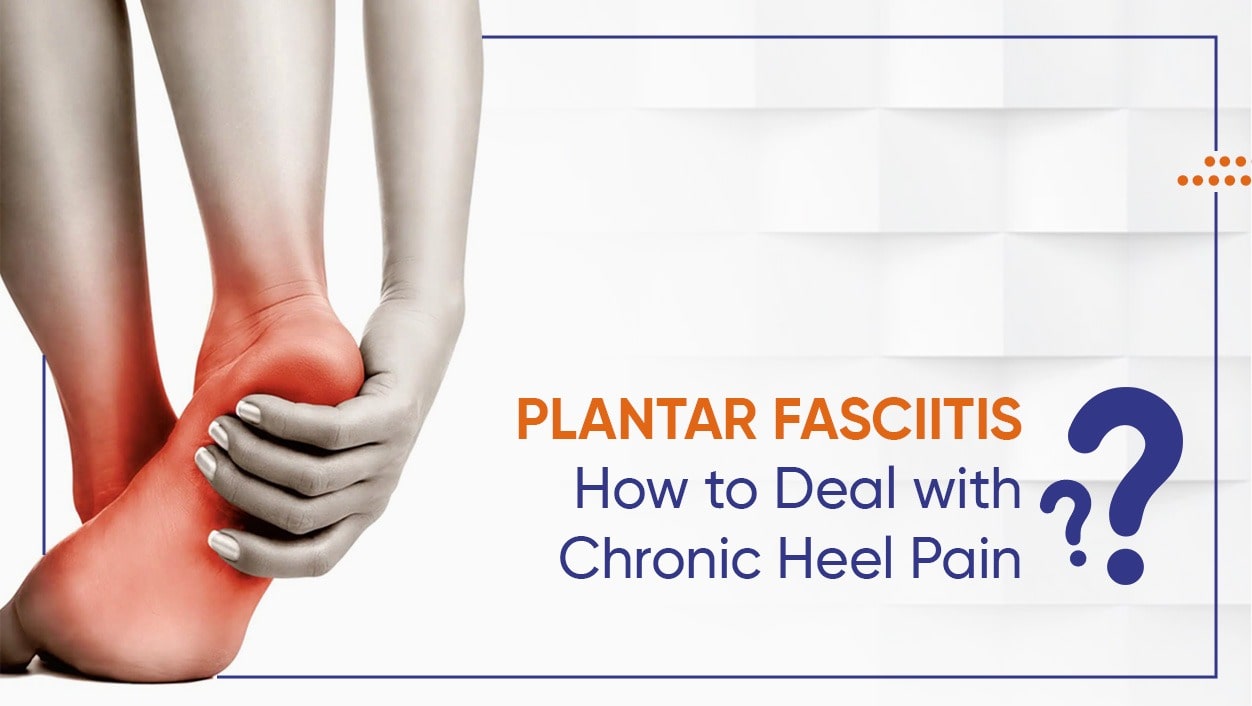Many adults, particularly someone over the age of 50, can suffer from foot pain from time to time. If the pain persists and is primarily felt in the heel, it could be a sign of plantar fasciitis, an inflammatory condition. The plantar fascia is a wide, thick band of tissue that runs along the bottom of the feet and forms an arch by connecting the heel bone to the toes.
Plantar fasciitis is a condition in which the plantar fascia becomes inflamed and causes persistent heel pain. It may also be linked to a heel spur, which is an extension of the heel bone.
What do the clinical signs of plantar fasciitis look like?
Plantar fasciitis symptoms differ from person to person; some people complain of dull pain, while others complain of acute agony.
The following are the most common signs and symptoms:
- Months of pain, stiffness, and burning pain in the bottom of the heel
- The pain either grows over time or appears suddenly after a period of heavy exercise.
- Pain worsens after exercising, climbing stairs, or standing or sitting for long periods of time.
- The arch of the foot aches.
- Inflammation of the heels
- In the morning, there is a lot of pain.
What creates plantar fasciitis in the first place?
Plantar fasciitis is triggered by a variety of factors. The following are some of the things that might strain the plantar fascia and produce heel pain:
- Being overweight and standing for lengthy periods of time
- While exercising, overstretching the sole
- An Achilles tendon that is stiff
- Having to carry hefty loads
- Running regularly or for lengthy periods of time is an example of a fast change in physical activity.
- Wearing high heels or footwear with insufficient padding to assist the arch of the foot
- Any injury sustained while participating in a jumping activity
- The formation of a heel spur
- Plantar fasciitis can occur in people who have autoimmune disorders such as lupus or rheumatoid arthritis.
Is it possible to treat plantar fasciitis?
Within 10 months of initiating easy treatment options for plantar fasciitis, the majority of people notice an improvement in symptoms, which include:
Cold compressions: Applying ice packs to aching heels for at least 20 mins several times a day will help to relieve pain and inflammation.
Nonsteroidal anti-inflammatory medicines, like ibuprofen, may be prescribed by doctors to relieve pain.
Stretching is the most effective non-invasive therapy for plantar fasciitis. Physical therapists can teach the patient stretching techniques, including calf stretching with leg swing, plantar fascia stretching, toe flexion stretching, and standing soleus stretching, which can be done many times a day to develop the lower leg muscles and stabilize the ankle.
Patients who may not respond well to physiotherapy may be prescribed corticosteroid injections by their doctors. These injections are used to decrease inflammation in the plantar fascia.
Low- or high-energy shock waves are administered to the painful region of the heel in shock wave therapy to promote healing in the plantar fascia.
Surgery: In severe situations, surgery is required to stretch the gastroc tendon, which is a component of the Achilles tendon. This operation aids in the reduction of discomfort and the restoration of healthy foot movement.
Plantar fasciitis can be managed at home by making lifestyle changes.
Taking appropriate rest and icing the foot when the muscles feel sore are two lifestyle modifications that may help treat plantar fasciitis at home.
Each morning, before and after exercise, stretch the feet, calves, and Achilles tendon.
Calf lifts and weight-bearing lunges are good exercises to do to develop the calf muscles and avoid the strain that comes with intense training. To minimize straining the feet, gradually increase the amount of exercise or activity.
Including lean meat, lentils, soybeans, and eggs in a protein-rich diet To maintain a healthy weight, it is recommended that carbs and saturated fats be limited.
Stop standing or sitting in the same position for extended periods of time.
Wearing shoes with a low heel that are suitably padded. Delicate insoles or heel pads can be added to the shoes if necessary.
Avoiding workouts that impose strain on the feet, such as jumping or running, and instead choosing for swimming or cycling.
Wearing night splints while sleeping to extend the foot.
Conclusion:
Plantar fasciitis is a major cause of heel discomfort that can be caused by overstretching, a change in foot anatomy, or a medical issue. Severe, continuous pain around the heel and arch of the foot characterizes the ailment, which worsens with exercise, jogging, or even prolonged standing. Icing, stretching, and medicines can help with most cases of plantar fasciitis.
People who have persistent heel discomfort should see an orthopedic doctor for a more through examination.










